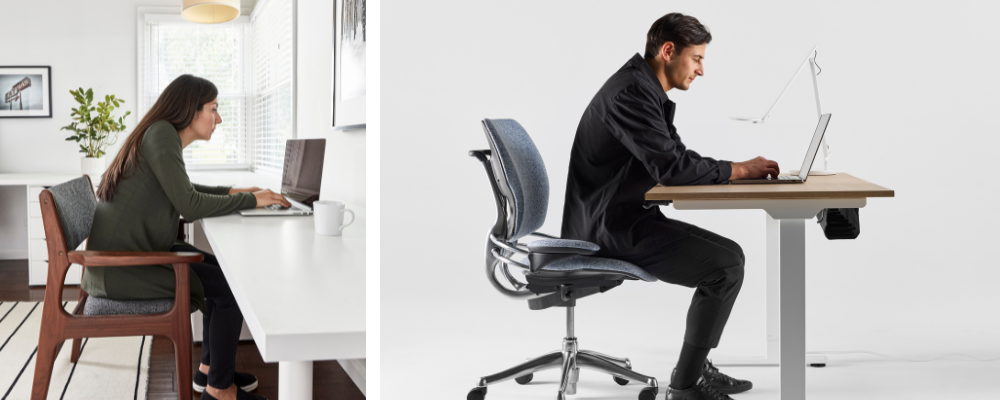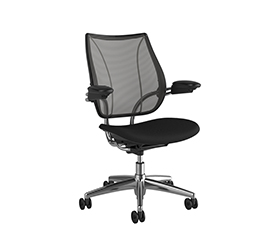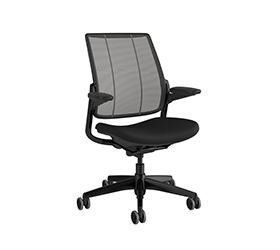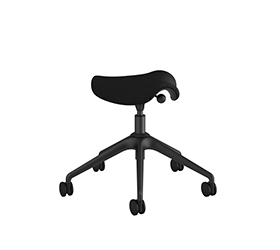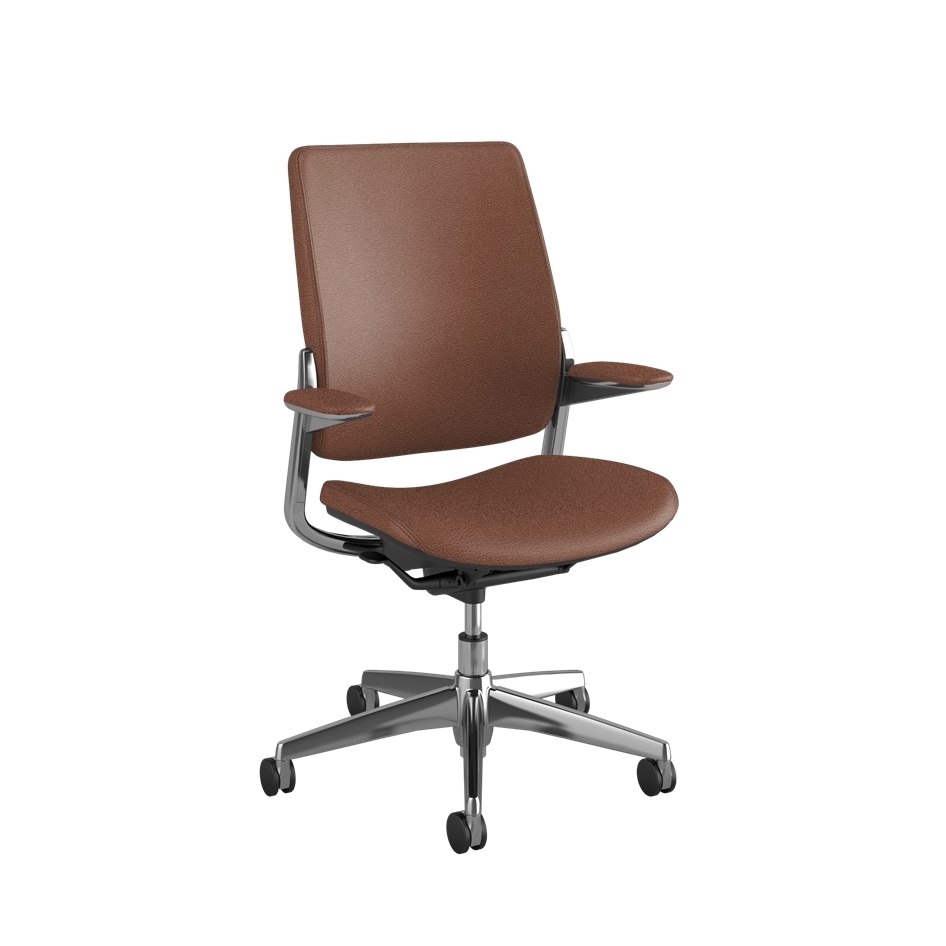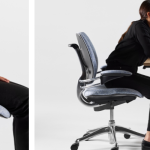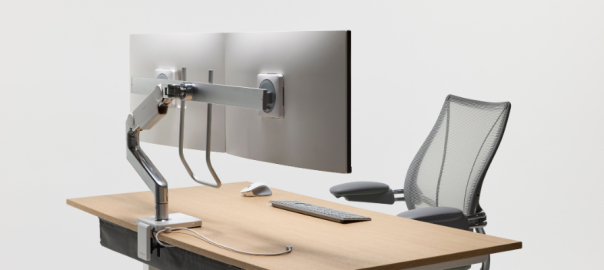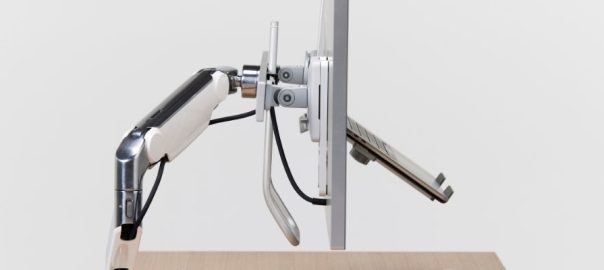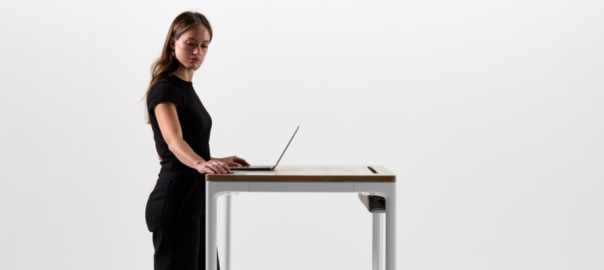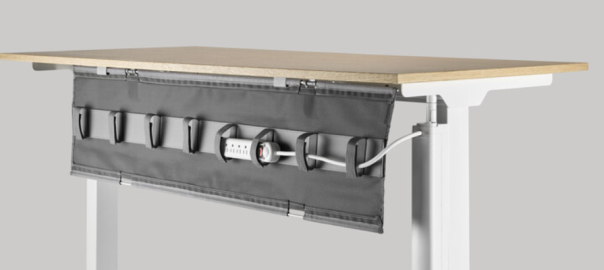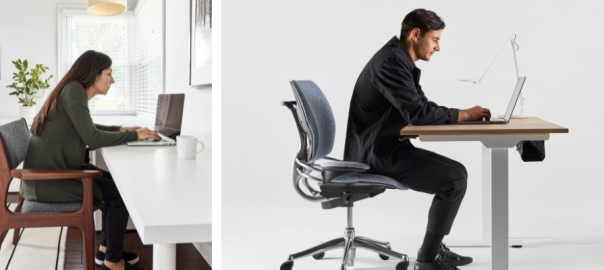Feeling stiff and uncomfortable after hours of sitting? That familiar ache in your back and neck could be telling you something important. Slouching in chair might seem harmless, but it can seriously affect your health if left unaddressed.
Many of us spend long hours seated, whether at work or home, and over time, this leads to a slouching posture that strains muscles, misaligns the spine, and causes ongoing discomfort.
Beyond the daily aches, the long-term effects of slouched sitting can be severe, including joint pain, reduced flexibility, and even impaired lung function. The good news? There are practical steps you can take to reverse this.
Simple changes like using the right type of office chair and paying attention to proper desk posture can significantly impact your well-being. So, let’s get started with how to correct posture, prevent slouching, and ensure your workspace supports your body correctly.
Do You Find Yourself Constantly Slouching in Your Chair?
Do you often catch yourself sinking into your chair, shoulders hunched, and spine curved? It’s a common habit, especially after working hours or scrolling through your phone. While it may feel comfortable in the moment, do you know that slouching can cause many problems? It can lead to long-term health issues, from back pain to reduced energy levels.
Moreover, when you spend hours in a slouched sitting position, you put unnecessary pressure on your back, neck, and shoulders, which can result in chronic pain. This affects your physical health and can drain your energy, making you feel sluggish and less motivated to tackle tasks.
Causes of Slouching
Some of the root causes behind slouching are:
- Sedentary Lifestyle: Sitting for a long period can lead to a slouched position. When you don’t move regularly, your muscles tire, and you start to slouch without realising it. A sit-stand desk helps you stay active during the day, reducing the chances of slouching.
- Poor Ergonomics: Slouching is inevitable if your chair or desk setup isn’t right. Lack of lumbar support, incorrect chair height, or poorly positioned desks contribute to poor posture. To tackle this, you can invest in an ergonomic office chair.
- Weak Core: Your abdominal and back muscles play a major role in maintaining good posture. If these muscles are weak, your body struggles to stay upright, leading to a slouched sitting position. Regular core-strengthening exercises can help correct this.
- Mental Fatigue: When you’re mentally exhausted, your body often follows. You may not feel it, but slouching in your chair is a natural response when your energy levels dip. Take regular breaks to stay mentally and physically alert.
- Lack of Awareness: Many of us don’t even realise when we’re slouching. We get lost in work or distracted by screens, and our posture suffers. Stay mindful and adjust your seating position throughout the day.
Do you Know that Slouching Can Cause Many Problems?
Constant slouching in chair does more than just affect your appearance—it has serious implications for your health. Poor posture can lead to many physical problems, and ignoring it can cause long-term damage. Let’s break down some key health risks you should be aware of:
Back and Shoulder Pain
A slouching posture puts immense stress on your back and shoulders, leading to tension and pain. Over time, this can lead to chronic discomfort and muscle stiffness, making it harder to maintain an upright position. A chair for back pain relief can help alleviate some of this pressure, but correcting your posture is crucial.
Misaligned Spine
Constant slouched position can lead to spinal misalignment, resulting in muscle spasms and long-term damage to your spine’s natural curvature. To maintain healthy alignment, it is essential to focus on proper desk posture and invest in supportive tools like the best posture chairs.
Poor Digestion
When in a slouching posture, you compress your abdomen, which can interfere with digestion. Over time, this can lead to problems like indigestion, constipation, and even metabolic issues. Maintaining a more upright posture helps your body process food more effectively, preventing digestive discomfort.
Reduced Lung Function
Slouching in chair restricts lung expansion, so you’re not breathing as deeply as you should. This limits oxygen intake and can lead to shortness of breath, fatigue, and poor cognitive function. Focusing on how to correct posture can improve your breathing and overall lung capacity.
Poor Circulation
Sitting for extended periods in a slouched position can negatively impact blood flow, especially in your legs and lower body. This can lead to poor circulation, swelling, and, in severe cases, the development of varicose veins. A sit-stand desk and regular movement breaks can help boost circulation.
Fatigue
Slouched sitting makes your muscles work harder to keep you upright, leading to muscle fatigue and tiredness. This can make you feel drained and less productive throughout the day. Good posture is key to conserving energy and preventing unnecessary muscle strain.
Headaches
Poor posture, especially in the neck and shoulders, commonly triggers headaches. The tension created by slouching posture can cause strain in the upper back and neck, leading to tension headaches. Correcting your posture can relieve this tension and reduce the frequency of headaches.
Nerve Compression
Slouched sitting can lead to nerve compression, especially in the neck and back, which may result in numbness, tingling, and even carpal tunnel syndrome in extreme cases. Maintaining ergonomic desk setups and focusing on correct posture can help prevent nerve issues.
Read More: Effect of Poor Posture
Effective Ways to Improve Your Posture
Good posture is one of the most important factors for maintaining overall health and well-being. It alleviates discomfort, enhances your appearance, and promotes better breathing. You can significantly improve your posture by making conscious adjustments in your daily routine and using ergonomic products.
Here are several effective strategies to achieve this.
Mind Your Sitting Position
Your sitting posture plays a crucial role in your overall posture. When seated, ensure that your chair height allows your feet to lay flat on the floor, with your knees at or slightly below hip level.
Also, use a chair that supports the natural curve of your spine. If necessary, place a rolled-up towel or cushion behind your lower back for additional support. Also, position your device screen at eye level to avoid straining your neck. Your eyes should be approximately 20 inches away from the screen.
Stretch Your Muscles
Incorporating stretching into your everyday routine can significantly improve your posture and overall well-being. Here are some stretching exercises that you can do to correct your posture:
- Neck Stretch: Sit or stand tall. Tilt your head to one side and bring your ear toward your shoulder. Hold for 15-30 seconds and switch sides.
- Shoulder Rolls: Sit or stand with arms relaxed at your sides. Roll your shoulders toward your ears and then back, creating a circular motion. Repeat ten times in each direction.
- Upper Back Stretch: Interlace your fingers and extend your arms before you. Then, round your upper back and push your hands away. Hold for 15-30 seconds.
- Chest Opener: Start by placing your feet shoulder-width apart. With this, interlace your fingers behind your back and straighten your arms, opening your chest. Hold for 15-30 seconds.
- Seated Forward Bend: While seated, extend your legs straight before you. Reach forward toward your toes, keeping your back straight. Hold for 15-30 seconds.
Adjust Your Workstation
Creating an ergonomic workspace is essential for maintaining good posture. Place your computer or laptop screen at eye level to prevent leaning forward, and keep your keyboard and mouse close enough that your elbows can remain at a 90-degree angle.
To enhance your body’s comfort and posture while working, consider investing in ergonomic furniture such as:
- Foot Rockers: Raising the feet slightly helps relieve pressure on the lower back, making them a practical addition to any workstation.
- Monarch Mat: These complement the Foot Rockers by providing a cushioned surface that supports standing tasks. They promote natural movement and reduce fatigue during extended periods of standing.
- Laptop Holders: These products provide an ergonomic solution to combat the risks associated with laptop use. Positioning the monitor at the correct height helps alleviate “laptop hunch” and encourages using an external keyboard for long-term comfort.
- Cable Management Solutions: These products help keep your workspace tidy and organised. This innovative system stores power strips and cables off the floor, reducing clutter and making maintaining an efficient working environment easier.
- Ergonomic Mouse: These solutions are designed for maximum comfort and productivity. The mouse’s shape contours to your palm, eliminating contact between your hand and the work surface. Its 30-degree tilt promotes a natural arm posture, alleviating wrist strain for all-day comfort.
Incorporate Movement
Regular movement is key to preventing stiffness and maintaining good posture. Take brief daily walking breaks to relieve muscle tension and improve circulation. Simple stretches, like shoulder rolls or neck tilts, can also alleviate discomfort and promote flexibility.
Ergonomically designed products like the Freedom Task Chair are beneficial for those who spend long hours at a desk. Its unique design encourages movement and supports a variety of postures.
Pay Attention to Your Footwear
The type of footwear you wear frequently can significantly impact your posture. So, choose shoes that provide adequate support and avoid wearing high heels for extended periods, as they can alter your alignment and strain your back. Flat shoes with arch support are ideal for maintaining proper posture.
Monitor Your Phone Usage
With the rise of digitisation, it’s easy to fall into poor posture habits while using smartphones. To avoid “text neck,” hold your phone at eye level and take frequent breaks to stretch your neck and shoulders. Ergonomic accessories, such as phone holders that elevate your device, can help maintain proper alignment while you use your phone.
Invest in Ergonomic Chairs
By investing in a good-quality ergonomic chair, you can maintain good posture, especially during long work hours. Some of the best ergonomic chairs for slouching posture are:
- Freedom Task Chair: It features a pivoting backrest that automatically adjusts to the needs of your spine, providing continuous support. Its innovative recline mechanism and sculpted cushions reduce pressure point loads, enhancing comfort throughout the day. This chair looks sleek and is built to last, functioning like new even after years of use.
- Diffrient Smart Chair: It uses form-sensing mesh technology to adapt lumbar support to each user. Its minimal design fits seamlessly into any modern office while providing instant support through its tri-panel mesh backrest. This chair’s unique design eliminates manual adjustments, making it convenient for those seeking personalised comfort.
Evaluate Your Sleep Position
Your sleeping posture is just as important as your walking posture. Choose a mattress that supports the natural alignment of your spine and use a pillow that keeps your head aligned with your spine, whether you sleep on your back or side. Investing in ergonomic sleep products can improve your resting posture, setting you up for a better day.
Avoiding Overreaching
Keep commonly used products within easy reach to lower strain on your body, keep a neutral spine, and promote better ergonomics. This simple adjustment can significantly decrease the risk of discomfort and injury. Organising your workspace so that essential tools and materials are easily accessible can lead to a more efficient and comfortable working experience.
Optimise Screen Ergonomics
Understanding the benefits of ergonomics during your screen time can significantly enhance your daily routine.
- Screen Brightness and Contrast: Lowering excessive brightness and optimising contrast enhance visual comfort, avoids ergonomics hazards, and promotes better ergonomics and overall posture during screen use.
- Anti-glare Screens: This feature minimises the need to strain your eyes and correct your posture, contributing to a healthier and more ergonomic workspace.
- Eye-level Screen Positioning: This adjustment promotes good posture and reduces neck strain by ensuring you don’t need to look up or down, keeping your head and neck in a neutral position.
Conclusion
Fixing slouching posture doesn’t have to be complicated. Start with small adjustments—like using ergonomic furniture, opting for a minimal desk setup, and ensuring your home office setup promotes good posture. Over time, these changes will significantly reduce the effects of poor posture and improve your comfort level.

